Fréjus: All destinations, advice & information for your holidays!
Fréjus, the vibrant city on the Côte d'Azur, offers a perfect mix of cultural highlights and relaxation by the sea. Walk in the footsteps of the Romans when visiting the ancient amphitheater and then relax at the city beach located on Boulevard d'Alger.
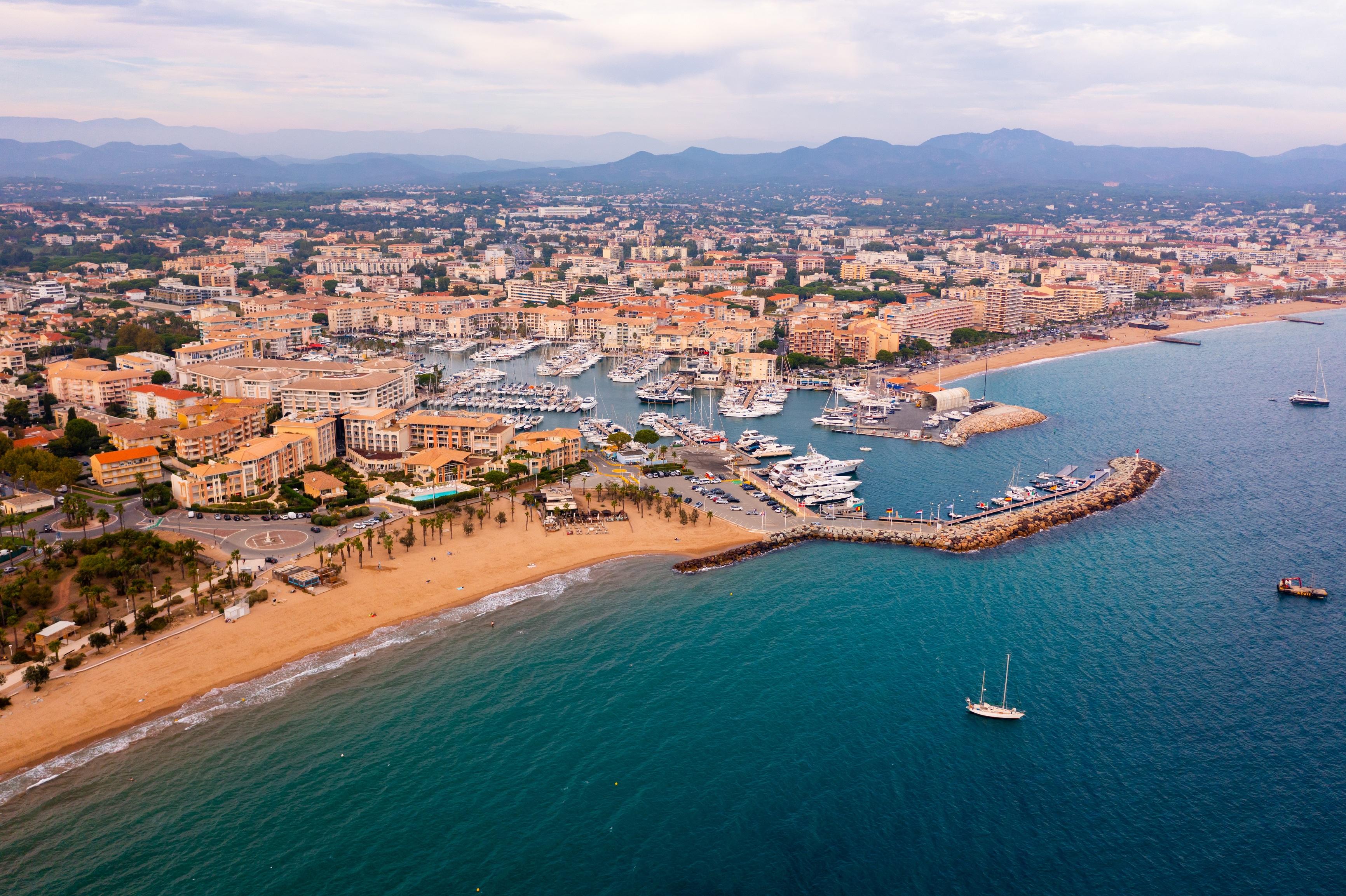
Table of contents
Fréjus - Must-see attractions
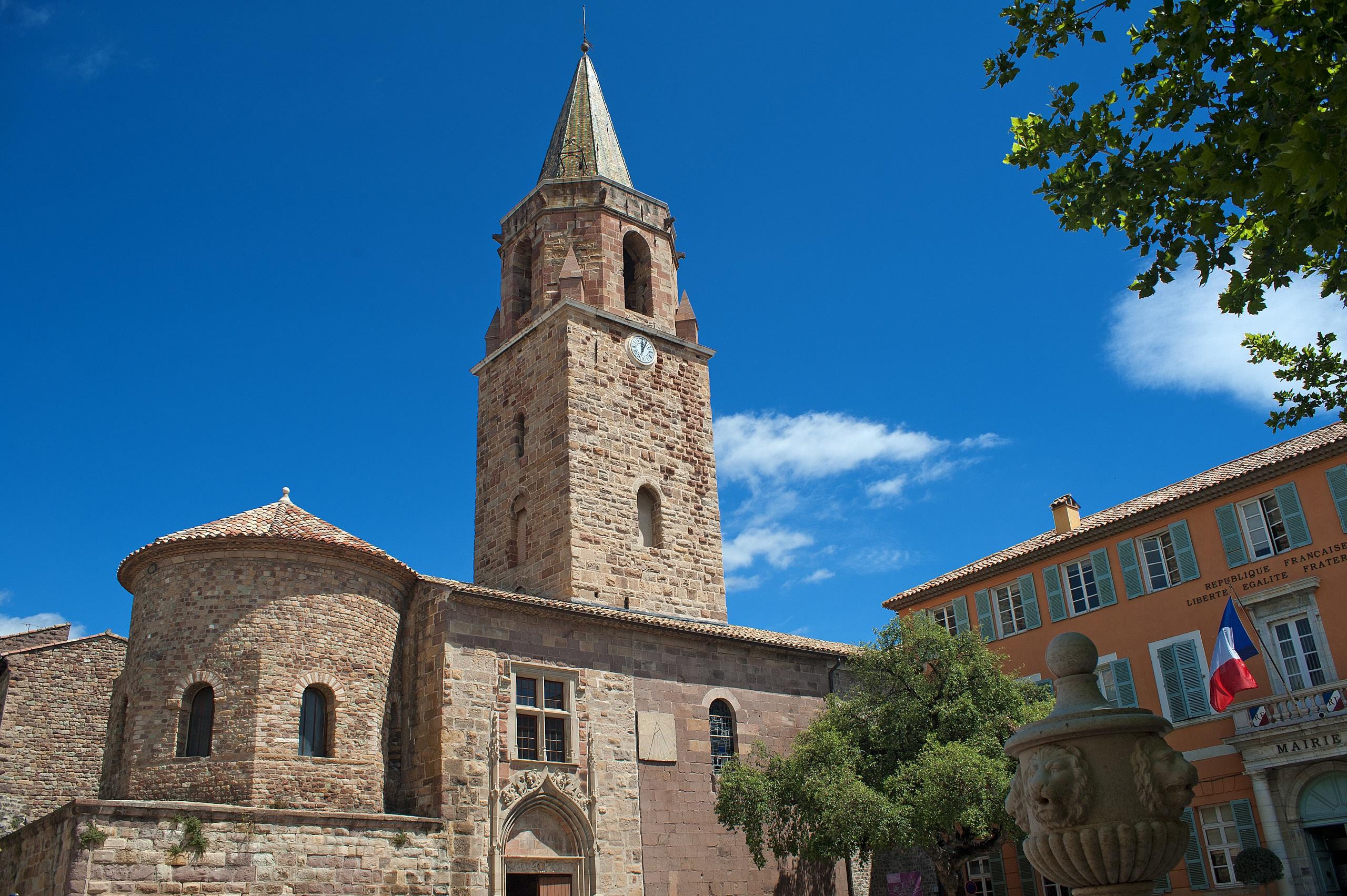
Saint-Leonce Cathedral
If you are looking for a place of relaxation in Fréjus, retreat to the cloister. It is located in a sunny courtyard in the chapter house wing. The baptistery from the 5th century is one of the oldest parts of the church. Take your time for a tour of the cathedral and discover many art treasures. One of them is the altarpiece by Jacobus Durandi, adorned with rich gold ornaments. The panel painting "Ascension" from the 16th century is also worth seeing.
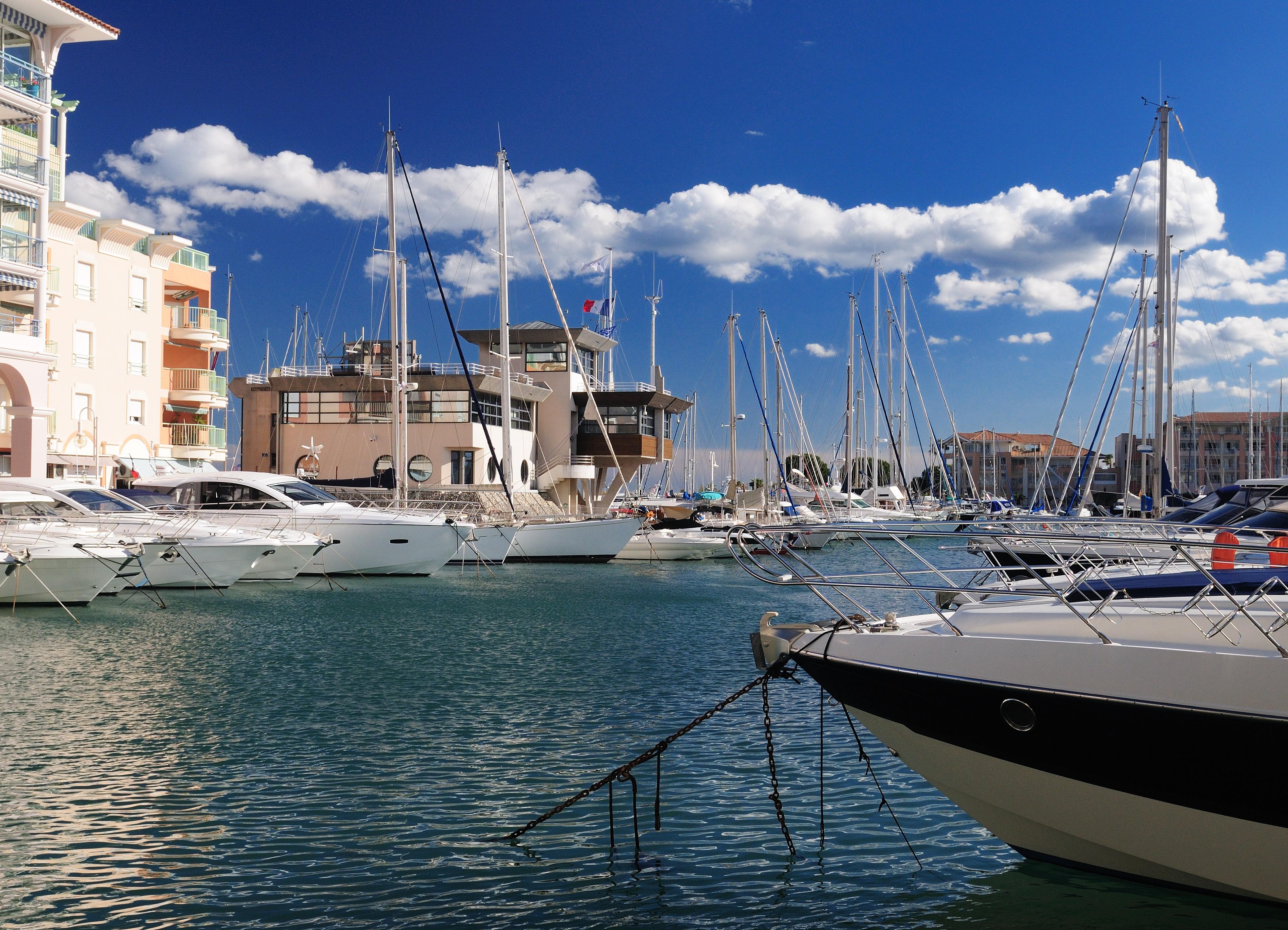
Port Fréjus
The harbor district of the southern French city of Fréjus is a popular excursion destination and attracts numerous visitors, especially in the summer. Here, you can try delicious specialties, watch the lively hustle and bustle, or relax on the Plage de la Base Nature beach. In the summer, the harbor festival takes place, which includes breathtaking fireworks, a night market, and various exhibitions. Even on holidays like Christmas or New Year's Eve, the harbor area of Fréjus is wonderfully colorful.

Fréjus Arena
Built in the 1st century, the original arena accommodated around 12,000 spectators who watched gladiator and bullfights, executions, or wild animal fights here. Throughout history, the amphitheater was used as a quarry and landfill before it was restored. Today, little remains of the Roman origins of the amphitheater. A gallery on the ground floor tells its history. The stands in the heart of the arena were reserved for high-ranking personalities. Visitors appreciate the special acoustics at open-air events.
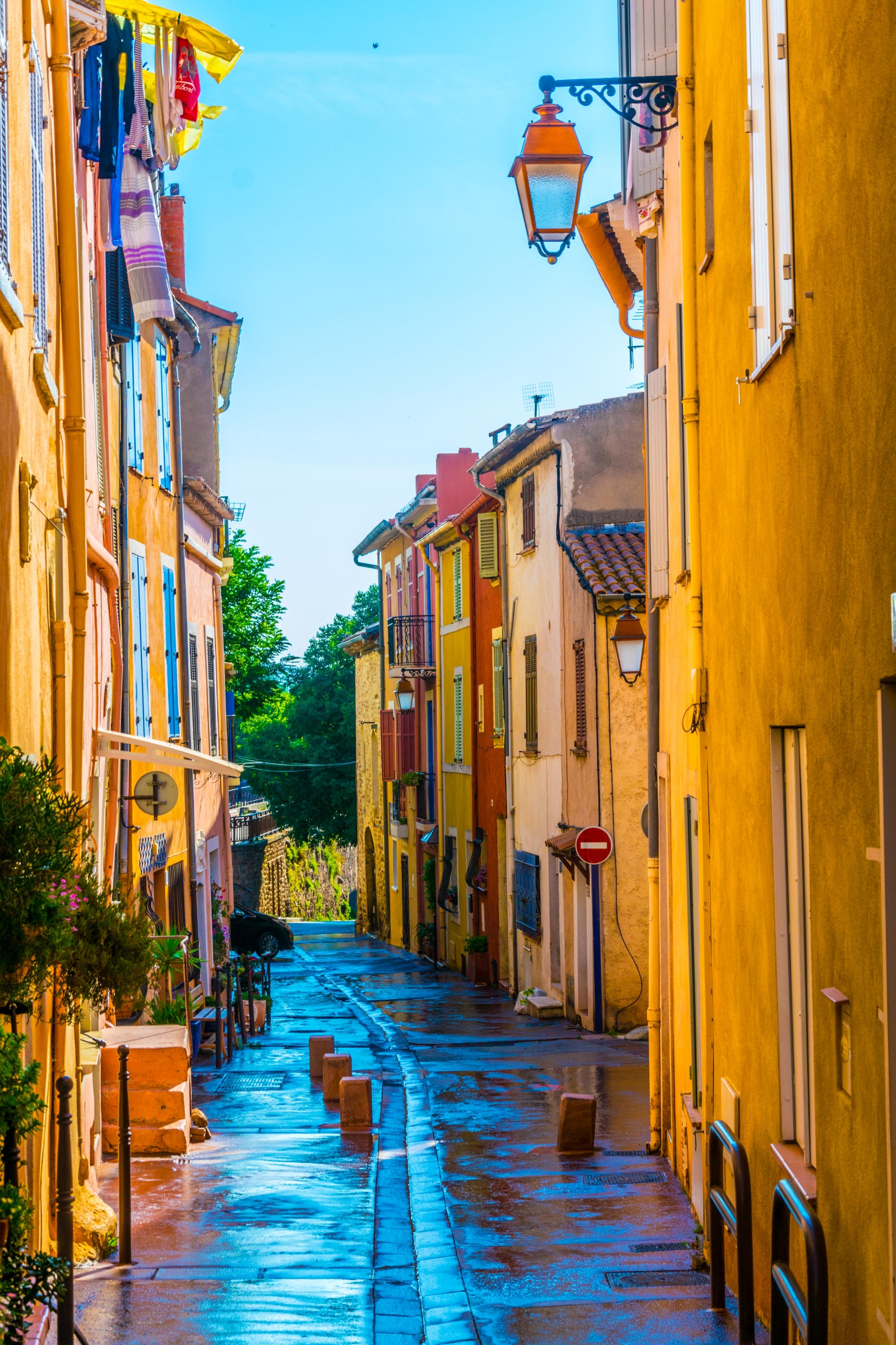
Fréjus Old Town
The old town of Fréjus was heavily influenced by the Romans. Cultural events are held today in the 28-meter-high amphitheater. The Roman aqueduct, the Romanesque Saint-Léonce Cathedral, and the picturesque marina are also popular attractions. Several beaches adjoin the marina. The longest and widest sandy beach is the Plage des Sablettes. For active vacationers, there is a water sports club at Plage de la République. The Pacha Plage is only accessible on foot.
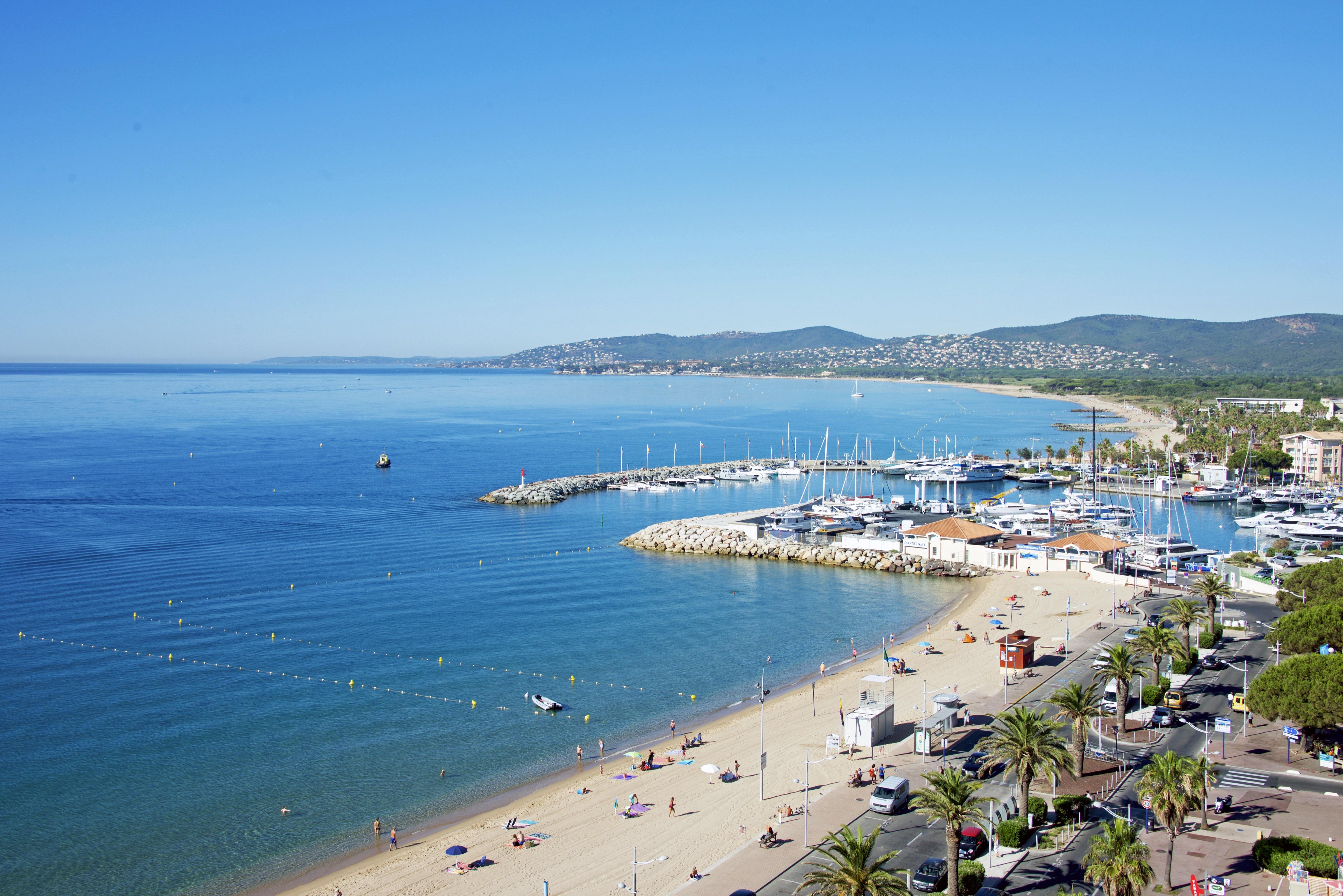
Fréjus Beaches
You can reach the centrally located beach of Fréjus via Boulevard d'Alger and Boulevard de la Libération. From this section, you have a magnificent view of the harbor. A beach popular with families stretches from the harbor to Saint-Aygulf. From the harbor to the resort of St. Raphael, a beach promenade invites you to stroll. Here you will find many shops and restaurants. Water sports enthusiasts will get their money's worth at the beaches of Fréjus. Jet skiing, diving, snorkeling, and stand-up paddling are available.

Hong Hien Pagoda
Over the years, the Hông Hiên Buddhist pagoda has been expanded with several buildings. It is nestled in a charming park, whose lush vegetation contributes to the exoticism of the structure. More than a century after its inauguration, the pagoda has become a tourist attraction. As the oldest Buddhist temple in Europe, the Hông Hiên pagoda is also of historical significance. The park contains numerous statues. The largest of them is a copy of the 2-meter-high Buddha statue in the Thiên Mụ Pagoda in Vietnam.
Fréjus - Secret spots
Villa Aurelienne
Amidst the expansive Parc Aurélien in Fréjus stands the Villa Aurélienne, which was built as a château in 1887. The building in the Palladian style now serves as a cultural center and can be visited by appointment or during openings. In the enchanting botanical garden, you can discover the remains of an aqueduct from Roman times.
Discover the bathing culture of antiquity: Porte d'Orée
In the heart of Fréjus near the ancient harbor from Roman times, the remains of the Gallo-Roman thermal baths from the 3rd century rise. The structure interpreted as a gate is the relic of an arcade made of sandstone and bricks that led to the frigidarium (cold water pool). Information boards reveal to you what it once looked like here.
Tour to La Chapelle Saint-Roch
With the bike, you have quickly covered the 12 km between Fréjus and the northwestern Roquebrune-sur-Argens. A beautiful destination is the Saint-Roch Chapel from the 12th century. The inhabitants dedicated it in the 14th century to the patron saint against the plague. The surroundings invite you to hike through the Mediterranean vegetation.
Archaeological Museum of Fréjus
Extraordinary finds like the two-headed Hermes make the Archaeological Museum of Fréjus a worthwhile destination. One of the highlights of the house is a panther mosaic. In Roman times, the place was a center of pottery production, and you can explore this history as well as the techniques of amphora and terracotta production in the rooms.
Fréjus - In 3 days
Day 1
On the French Côte d'Azur between Cannes and St. Tropez, the traditional port city of Fréjus entices with impressive buildings and captivating Roman history. The city offers a successful blend of beach vacation and culture. Sightseeing in Fréjus usually begins at the Roman amphitheater in the northwest of the old town. In the imposing structure from the 1st century, up to 10,000 spectators once delighted in brutal gladiator fights and bloody hunts for wild animals. Today, the arena is less brutal. In the summer, you can attend various events here, including concerts by famous stars. However, the ancient Romans could also appreciate refined art. In the Roman theater just a few steps away, poets, musicians, and actors of that time showcased their arts. Just a stone's throw from the theater, you will encounter another striking structure from the Roman era, the aqueduct. The architectural masterpiece likely also dates from the 1st century and brought water to Fréjus.
Day 2
For the special sights of the old town of Fréjus, it is best to plan a separate day. You will certainly spend some time in the Saint-Léonce Cathedral in the center, filled with extraordinary artworks. The former bishop's seat from the 11th century with baptistery, provost's house, and cloister fascinates with masterful statues and artistic paintings from the 16th and 17th centuries. The two-story cloister with double marble columns dates from the 13th century. Its richly painted wooden coffered ceiling is a delicate work of art. Opposite the cathedral, the Archaeological Museum invites you on an interesting journey into Roman times. Marvel at the multitude of statues, mosaics, art, and everyday objects. Artifacts from other excavation sites are also shown in changing exhibitions. The eventful history of the city and Provence is told by the city museum in a venerable townhouse on Rue Jean Jaurès. A quiet green oasis for relaxation is the Parc Aurélien with the Villa Aurélienne, where photo exhibitions are regularly held.
Day 3
The strikingly carmine-red structure of the Missiri Mosque at the northern edge of Fréjus on Rue du Malbousquet appears almost unreal among all the French architectural styles. The secular fortress with its massive six towers and high walls was a military center for the Senegalese Tirailleurs, a colonial infantry corps of the French army. After so much culture and history, a visit to the Zoological Garden at the northern end of Fréjus is especially recommended for families. Around 400 animals from several continents live here. Through entertaining playful animations, your children will learn exciting facts about the lifestyles of lions, tigers, hippos, zebras, chimpanzees, and a variety of tropical birds. What would Fréjus be without beach days at the nearby sea? The beach west of the harbor is particularly popular with families due to its gently sloping shore. A great alternative to the beach is Aqualand on the southwestern outskirts of the city. The huge water park with its many slides, water games, and wave pool guarantees top-notch water fun.
Fréjus - Climate
If you plan a trip to Fréjus during the peak travel season in July and August, you can expect the best summer weather. In summer, water temperatures reach a pleasant 25 ℃ and more. Even in October, you can still swim with a water temperature of 20 ℃. July is the friendliest month with 12 hours of sunshine per day. For trips in late autumn and winter, it is better to take rain protection with you: nine days of precipitation per month are to be expected. Thanks to the Mediterranean climate, temperatures do not drop below 0 ℃ even in winter.